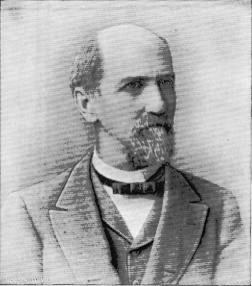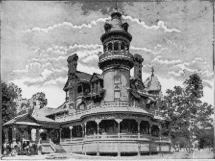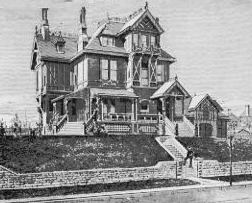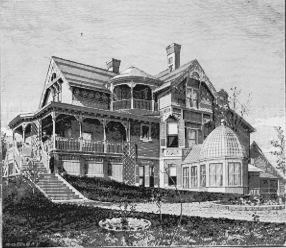|
OMAHA
ILLUSTRATED.
South Carolina, Governor; Thomas B.
Cuming, of Iowa, Secretary; Fenner Ferguson, of Michigan,
Chief justice; James Bradley, of Indiana, and Edwin R.
Hardin, of Georgia, Associate justices; Mark W. Izard, of
Arkansas, Marshal; Experience Estabrook, of Wisconsin,
Attorney. Governor Burt and Secretary Cuming arrived at
Bellevue on October 6, 1854. The other officers came at
different times during the following few months. Governor
Burt had been taken
|
[The late
Judge Clinton Briggs was born in Washtenaw county,
Michigan, September 9, 1828, and studied law with
Lathrop & Duffield at Detroit, the senior
member of which firm is now the United States
Minister to Russia. After being admitted to
practice in the Supreme Court of Michigan, in 1853,
be entered the office of the late Wm. H. Seward, at
Auburn, N. Y., for a further course of study, and
in 1854 was admitted to practice in the Supreme
court of that State. With this professional
training be came to Omaha
|
|
November 19, 1855, and at once entered into
practice. In 1857 he was elected County judge for
two years. Before his term expired he was elected
to the Territorial Legislature, and assisted
largely in framing the present Code of Civil
Procedure of the State. At the expiration of his
judicial term in 1859, Judge Briggs resumed his law
practice, forming a partnership with Hon. John I.
Redick, and for ten years thereafter, and until its
dissolution, the firm of Redick & Briggs stood
at the head of the Omaha bar, and represented one
side of every important case. In 1860, Judge Briggs
was elected the fourth Mayor of Omaha, his term
being distinguished by the completion of
telegraphic connection between Omaha and the
Atlantic at New York, and the Pacific at San
Francisco, via Salt Lake, and he sent the first
congratulatory messages to those cities. After his
term of Mayor expired, and up to 1871, Judge Briggs
was wholly
|
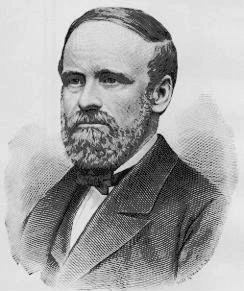
THE LATE JUDGE CLINTON BRIGGS.
|
devoted to his profession, but his health
becoming impaired in the latter year, he withdrew
from general practice and confined himself to few,
and only important cases. In 1875 be was a member
of the Constitutional Convention which framed the
present State Constitution. In 1877 be came within
a few votes of receiving the Republican nomination
for United States Senator, his candidacy being
urged by his friends in recognition of his long,
persistent and sucessful (sic) efforts to compel
the two leading railroads of Nebraska to pay taxes
on their immense land grants, and also of the
prominent position taken by the judge in the
Constitutional Convention on all questions as a
representative of the people's interests. In the
hope of regaining health Judge Briggs went to
Europe in 1878, and traveled extensively there with
much benefit, but on his return his ill health
still continuing, be traveled much in California
and the western States and
|
|
Territories. The Judge aided in promoting
various public enterprises in the interests of the
city and State, among which was the construction of
the Omaha & Southwestern railroad. He was still
engaged in some important law cases at the time of
his death, which occurred December 16, 1882.
|
ill on the journey from South Carolina, and he grew worse
from day to day after he reached Bellevue. He died on the
18th of October, 1854, at the old Presbyterian mission
house, which at that time was in charge of Rev. William J.
Hamilton. By virtue of his office Secretary Cuming became
acting-governor and at once entered upon the discharge of
his duties. On the 21st of October he issued a proclamation
ordering the taking of a census. The work began on the 24th
and was completed within four weeks. This census, which was
taken in rather an informal manner, gave the population of
the Territory as 2,732, excluding the Indians of course.
Upon the completion of the census Governor Cuming called an
election to take place on December 12th. At that election
members of the Legislature and a delegate to Congress were
elected. Napoleon B. Gidding, who was elected to Congress,
received 377 votes, Hadley D. Johnson 266, Bird B. Chapman
114, Joseph Dyson 23, and Abner W. Hollister 14. Douglas
county, which was then composed of Omaha City precinct and
Bellevue precinct, cast a total vote of 203, of which Hadley
D. Johnson received 198 and Bird B. Chapman 5.
[18]
|
